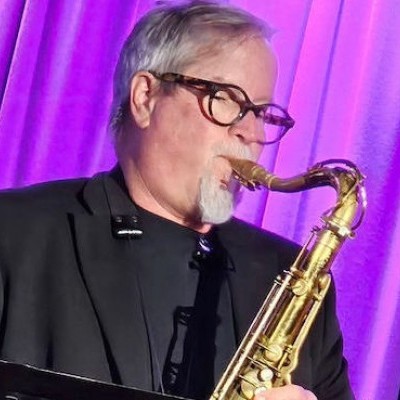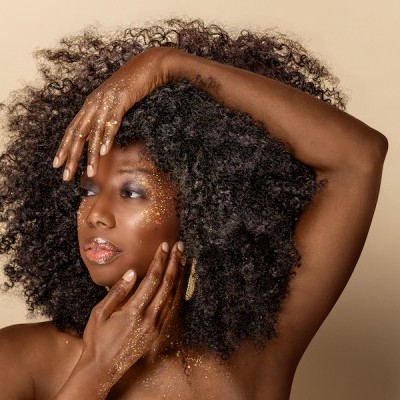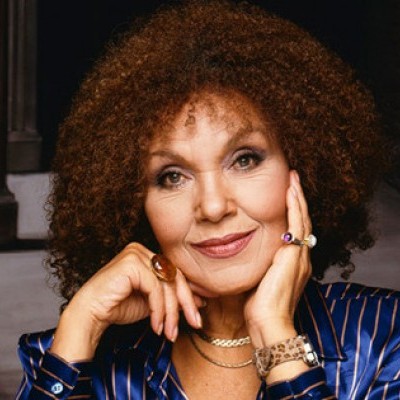Oct 28, 2025 10:47 AM
In Memoriam: Jack DeJohnette, 1942–2025
Jack DeJohnette, a bold and resourceful drummer and NEA Jazz Master who forged a unique vocabulary on the kit over his…
Intense listening that results in meaningful communication and deep connection has been a philosophical touchstone for International Jazz Day since its inception in 2011. At the 2019 edition in the host cities of Sydney and Melbourne, the event’s co-artistic directors—pianist Herbie Hancock and trumpeter/trombonist James Morrison—participated in workshops and master classes that emphasized the importance of active listening and cross-cultural dialogue.
“The fundamental thing about jazz—more than any other art form—is listening to the other person then accept what they bring,” Morrison said at Melbourne Conservatorium of Music before engaging in a workshop with Australian didgeridoo master William Barton. Their seminar, “Improvisation: A Meeting Point for Jazz and Indigenous Culture,” illuminated jazz’s malleability at incorporating vast cultures and unconventional instrumentations.
The tenant of vigilant listening was imparted in less lofty manners too. Earlier that day, bassist Emma Dayhuff, one of the visiting Herbie Hancock Institute of Jazz Performance Fellows, guided a group of the Conservatorium’s first-year jazz students in ensemble playing. She coached them in such fundamentals as intensifying the connection between the bass and drums, heightening the pianist’s sense of comping, spatial awareness, and crafting cogent improvisations. Her strongest directive for them was listening to each other so that the overall composition could blossom.
“Listening is about being selfless in the music,” she said. “If 99 percent of your focus is listening to what everyone else is saying on their instrument, then what you say will make more sense. Whereas, if you’re only playing and listening to and for yourself, you just get inside your world and are no longer part of the conversation. The conversation is what makes the music speak to whoever else is listening. The conversation is what makes jazz music a collective art.”
Alto saxophonist Antonio Hart imparted similar wisdom during a big band workshop with the New South Wales Public Schools Stage Band inside the Sydney Opera House. Hart drilled the students on several concepts, including dynamic awareness, phrasing, tempo and achieving the right sense of swing. He taught them how to make pianissimos softer, fortissimos louder and crescendos more dramatic.
“The most challenging thing for me was getting the dynamic range, because that’s not something that we really factored into our rehearsals,” said Charlie Llewellyn, a 15-year-old alto saxophonist who took Hart’s workshop.
While deconstructing a big band chart with the students, Hart told them that jazz was originally designed for dancing and that it often has an explicit or implied 6/8 feel. “The 6/8 meter comes from Africa, so jazz has a triplet feel,” Hart explained after his workshop. “When people look at sheet music, they see eighth notes. In early jazz, they played the dotted eighth/sixteenth. That’s all music notation. But it’s all felt by the triplet 6/8 meter.”
On the other end of the instrumentation spectrum, singer and Herbie Hancock Institute of Jazz Performance graduate Michael Mayo conducted an edifying vocal master class— also at the Sydney Opera House. He listened to three hopefuls sing “How High The Moon,” “Nature Boy” and “Night And Day,” accompanied only by piano. He gave them pointers on phrasing, internalizing the tempo and, of course, listening to the band. More provocative, however, was his concept of listening both in the moment and in the future. “It’s the distinction between being reactive and being proactive,” Mayo explained afterward. “Instead of reacting to just what’s happening at the moment in the music, you want to hear into the future about the next two, three, or four chords are going to be so that you can feel like you have a grasp of what’s going to happen. That’s not to say that you’re pre-planning out exactly you’re going to do in terms of improvising; it’s familiarizing yourself enough with the song’s form, the rhythm, and harmony enough that you feel like you have the leeway and leverage to do whatever you want to do.”
Hancock participated in several workshops throughout the program in Australia a well. At the Sydney Opera House, he and the Hancock Institute Fellows gave a succinct history class on the development of jazz, starting out with Scott Joplin’s “Maple Leaf Rag” and Louis Armstrong’s “Struttin’ With Some Barbeque” and concluding with his 1970s jazz-fusion staple “Actual Proof.” They also highlighted avant-garde jazz with a sterling treatment of Ornette Coleman’s “Lonely Woman.”
In another master class at the Melbourne Conservatorium of Music, Hancock briefly explained how he constructed his classic composition “Maiden Voyage” after being assigned to write a TV jingle for a cologne commercial. In a humorous anecdote, he explained how after talking with Wayne Shorter on a plane ride from New York to California for a recording session with the Miles Davis Quintet, he immediately came up with the song’s rhythm and wrote it down on a napkin, only to lose it soon after. But he subconsciously played that same rhythm while they recorded Ron Carter’s “Eighty-Eight.”
After returning to New York, Hancock recalled conceiving the melody and first chords but having trouble fleshing them out for the turnaround to return to the home key. After spending hours on the piece at around 2 a.m., “A voice inside my head said, ‘You don’t have to go to the home key. You have the song already,’” intoned Hancock with a laugh.
Hancock and the Fellows then constructed a new composition from scratch, starting out with harmonica player Roni Eytan clapping out an extemporaneous rhythm. Soon after trumpeter Aidan Lombard asked individual members of the audience to give notes to structure the chord changes and melody. And from there, they along with other Fellows created an impromptu ditty that someone from the audience titled “Rock My Soul.”
This year’s Jazz Day educational component was its most expansive yet. In fact, Australia functioned more as the host continent, given that the educational efforts extended beyond Sydney and Melbourne to include a “Generations in Jazz” youth festival in Mount Gambier, South Australia, which featured Morrison, Lizz Wright, Kurt Elling and Joey DeFrancesco.
Additionally, organizers conducted the inaugural Jazz Day competition for young composers, with Hancock and Morrison serving as judges. The winners were 12-year-old trumpeter Flynn Poppleton and 9-year-old violinist Naomi Nogawa-Lewy. Hours before the Jazz Day all-star concert, the New South Wales Public Schools Jazz Orchestra performed a melodic hybrid of Poppleton’s and Nogawa-Lewy’s winning pieces arranged by 2018 Herbie Hancock Institute of Jazz graduate Jon Hatamiya. Hancock and Morrison not only wrote a big band arrangement of the music, but each of them had a role as a featured soloist
“I’ve always loved every sort of music,” an ecstatic Nogawa-Lewy said after the performance. “But jazz really brings out my inner soul.” DB

Jack DeJohnette boasted a musical resume that was as long as it was fearsome.
Oct 28, 2025 10:47 AM
Jack DeJohnette, a bold and resourceful drummer and NEA Jazz Master who forged a unique vocabulary on the kit over his…

“I’ve told students, ‘I don’t mind if you use AI for this or that project,’” says MIT’s Pascal Le Boeuf. “‘But you need to tell me.’”
Sep 18, 2025 11:14 AM
A standard joke when it comes to discussing artificial intelligence, or AI, is that it’s developing so rapidly that…

Chuck Manning Works for NASA … and plays jazz.
Sep 18, 2025 11:23 AM
Congratulations! After years of study, you’ve earned your degree in jazz performance. But let’s face it: Making a…

Gadabout Season developed over many months of recording sessions in Brandee Younger’s East Harlem living room.
Sep 16, 2025 11:52 AM
When she’s on the road, Brandee Younger enters a hybrid state of action and contemplation. Free of daily distractions…

Cleo Laine, 1927–2025
Sep 16, 2025 10:03 AM
The music world mourns the loss of three important artists from the realms of jazz, blues and beyond with the recent…